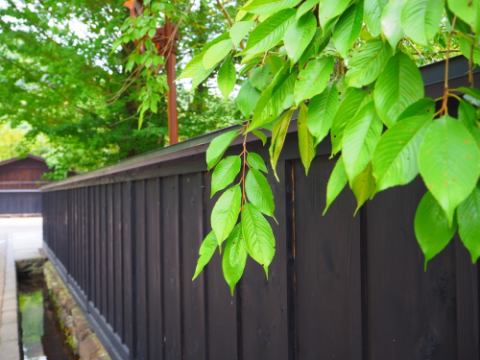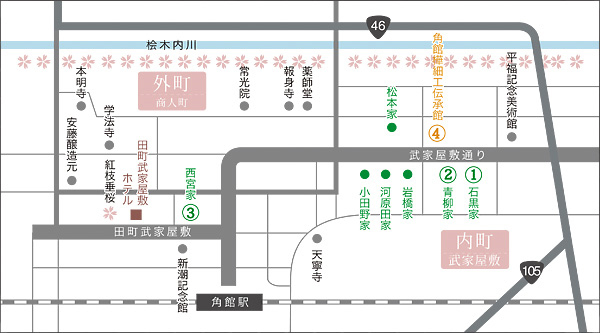- Top
- Know Kakunodate
Town split and fire extinguishing
The town is divided into Takeba Town (Inner Town) and Merchant Town (Outer Town), and at the boundary there is a square about 21 m wide called "fire cancellation" to separate the north and south.Also, as you walk along the street, there are places that look like dead ends at first glance.
This was a technique often used in the castle town, playing the role of defending it by hindering the prospect against the attack of the enemy.Even now, after about 400 years, the town split has hardly changed.
This was a technique often used in the castle town, playing the role of defending it by hindering the prospect against the attack of the enemy.Even now, after about 400 years, the town split has hardly changed.





